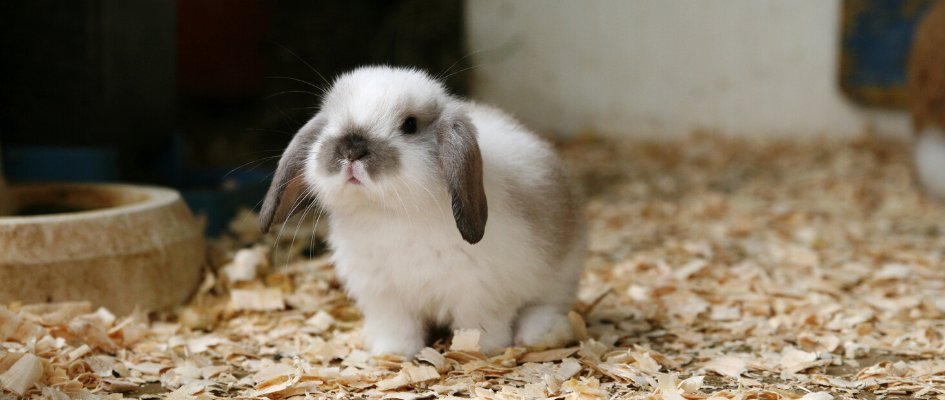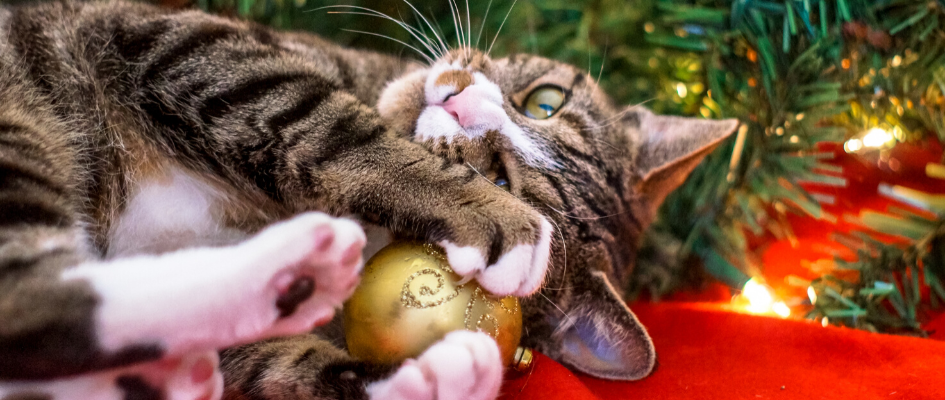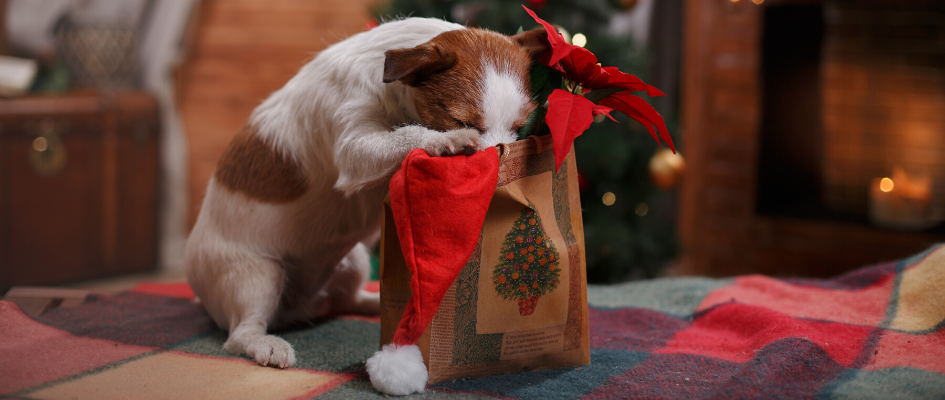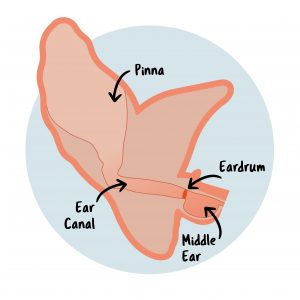Ticks are widespread in the UK. They are actually arachnids rather than insects and, like spiders, adult ticks have 8 legs and vary tenfold in size from 1 millimetre to 1 centimetre. Ticks hatch from eggs and develop into larvae, then nymphs, and finally into adults. At each stage ticks have to attach onto and feed from an animal (their host), to develop into the next stage. The younger stages of ticks, like larvae, prefer to feed on small animals like birds and rodents. However, the older stages can attach onto and feed on larger mammals, such as dogs and cats, and also humans. For this reason, these unwelcome hitchhikers are something you should be aware of.
How do animals get ticks?
Whilst they could be found in some gardens, particularly in more rural areas, ticks are most commonly found in vegetation in areas such as woodland, meadows and moors. When they are looking for a new host to attach to, they are described as ‘questing’ and will wait on low branches and leaves to attach to any animal brushing past.
Is there a particular time of year that my pet is likely to be affected?
Ticks are most active in spring and early summer, and then again in early autumn. They are generally dormant in cold weather. However, with global temperatures on the rise, they are likely to be active for a greater proportion of the year.
Why should I worry about ticks biting my pet?
The majority of the time, tick bites will not harm your pet. Rarely, bacterial infections or abscesses will develop at the site of a bite. This is more likely to occur if a tick has been improperly removed, with part of the tick being left in the skin. However, the main reason for wanting to prevent tick bites in dogs is that they have the potential to act as vectors (spreaders) of infectious disease.

What diseases can be spread by ticks?
In the UK the most common disease that ticks transmit is Lyme disease, caused by the bacterium Borrelia burgdorferi. Dogs that are bitten by an infected tick do not always become ill. We know this because many dogs in the UK have antibodies in their blood to the bacterium, suggesting they have been exposed, without ever showing signs of being unwell. However, some dogs do become ill, and this can occur weeks to months after being bitten. Signs of Lyme disease in dogs can include painful swollen joints, a fever and lethargy. It can also go on to cause glomerulonephritis, a condition affecting the kidneys.
Lyme disease can also affect humans, often showing as a characteristic ‘bulls-eye’ rash in the area of the bite. This rash is not generally seen in dogs. Humans can initially suffer from a flu-like illness, but can also be affected by heart rhythm abnormalities, neurological problems and arthritis. In some people, this can become a long-term illness. Whilst there is no evidence humans can be directly infected by dogs carrying Lyme disease, dogs could bring infected ticks into your home and garden.
Babesia is another parasite that can be transmitted by ticks to your dog. It can cause damage and destruction of red blood cells in the bloodstream, sometimes causing severe anaemia (low red blood cell count), as well as bleeding disorders and organ failure, and can be fatal. Until fairly recently, Babesiosis was a disease only seen in the UK in dogs that had travelled from continental Europe. However, in recent years, several cases of Babesiosis have been seen in dogs in the South East of England that have never travelled abroad, sparking concern that this infection is now beginning to establish in ticks in this country.
Dogs and humans can also contract a disease called Ehrlichiosis from ticks, though this is also rare in the UK.
How can I prevent my pet from getting ticks?
It is important to check your dog daily for ticks and remove any that are found, particularly at times of the year when ticks are most active and when your dog has been walked in areas that are high risk. Be sure to check them all over, including their feet, groin and armpits. Cats can also be affected by ticks but are quite good at grooming them off. If your cat gets ticks, they are most likely to be found on areas of the body they cannot clean so easily, such as on the head.
There are a variety of preventative tick treatments available that will repel ticks, kill them once they have attached, or both. Infected ticks do not spread infections such as Lyme disease until they have been attached to the host for around 48 hours. Effective tick treatments will kill ticks much quicker than this, meaning they are killed before they can transmit disease to your pet. Many of these treatments also prevent flea and other parasite infestations. Our practice staff would be happy to discuss with you what treatment would be best suited to use for your pet as part of their routine parasite prevention, so please do get in touch!
What should I do if I find a tick on my pet?
The easiest way to remove a tick is by twisting it off using a special tick remover. Properly removing a tick in this way reduces the risk of leaving the tick’s mouthparts still attached. Ticks should never be removed by squeezing or pulling, nor by being burnt.
If you are unsure or worried that your pet has a tick, book an appointment with your local Goddard vet.





